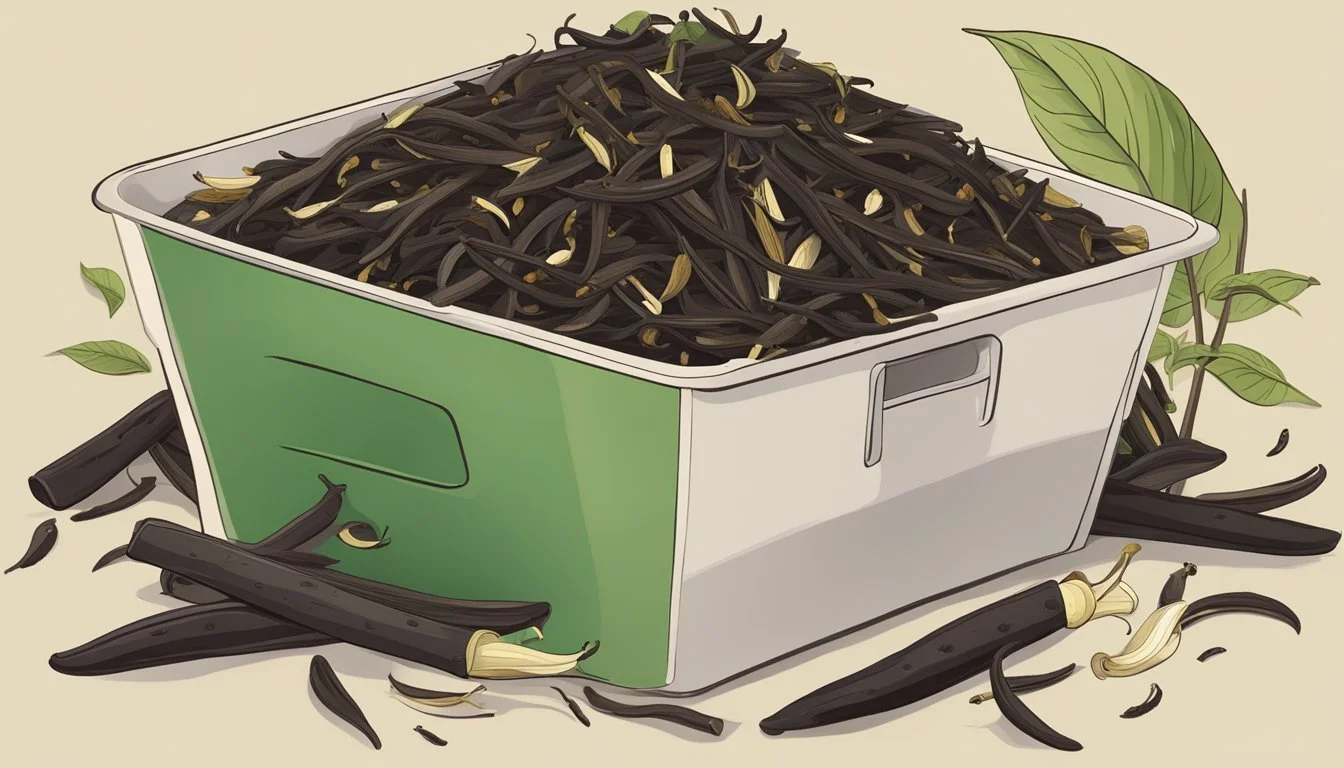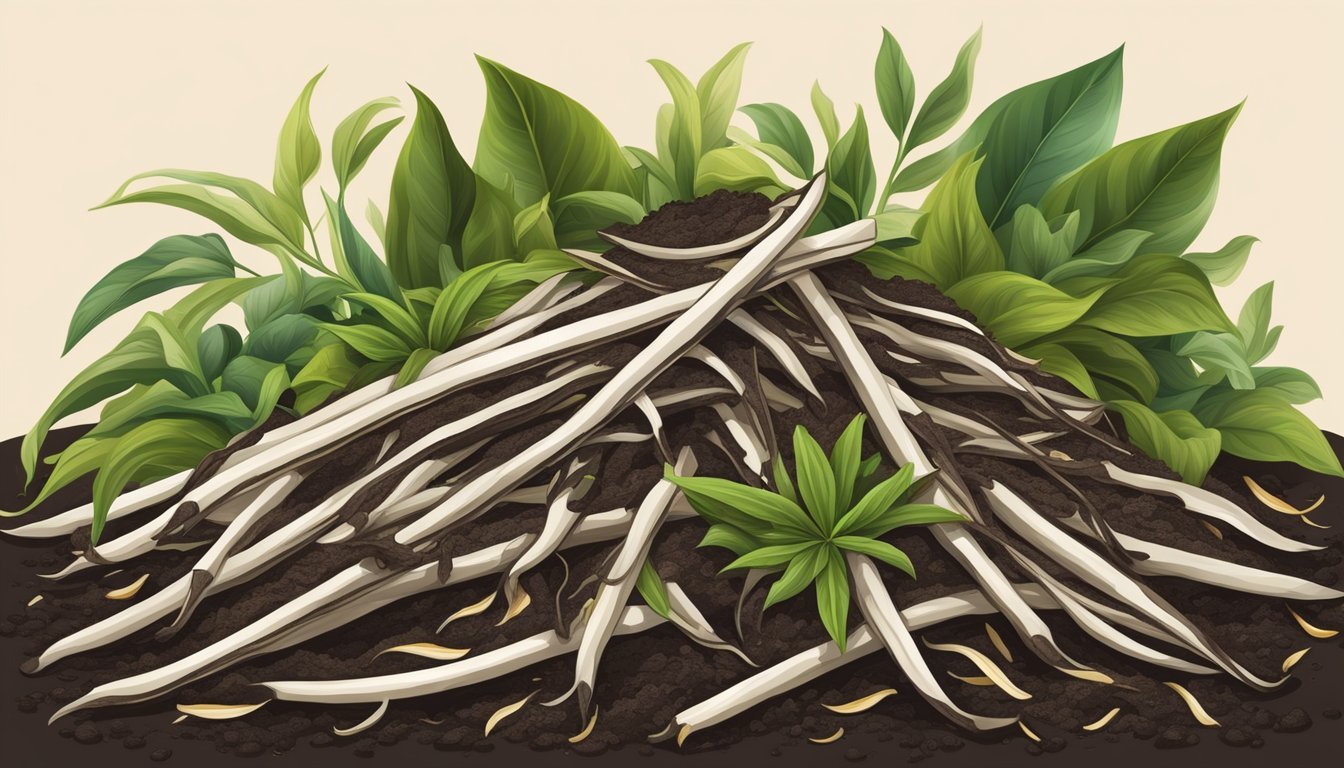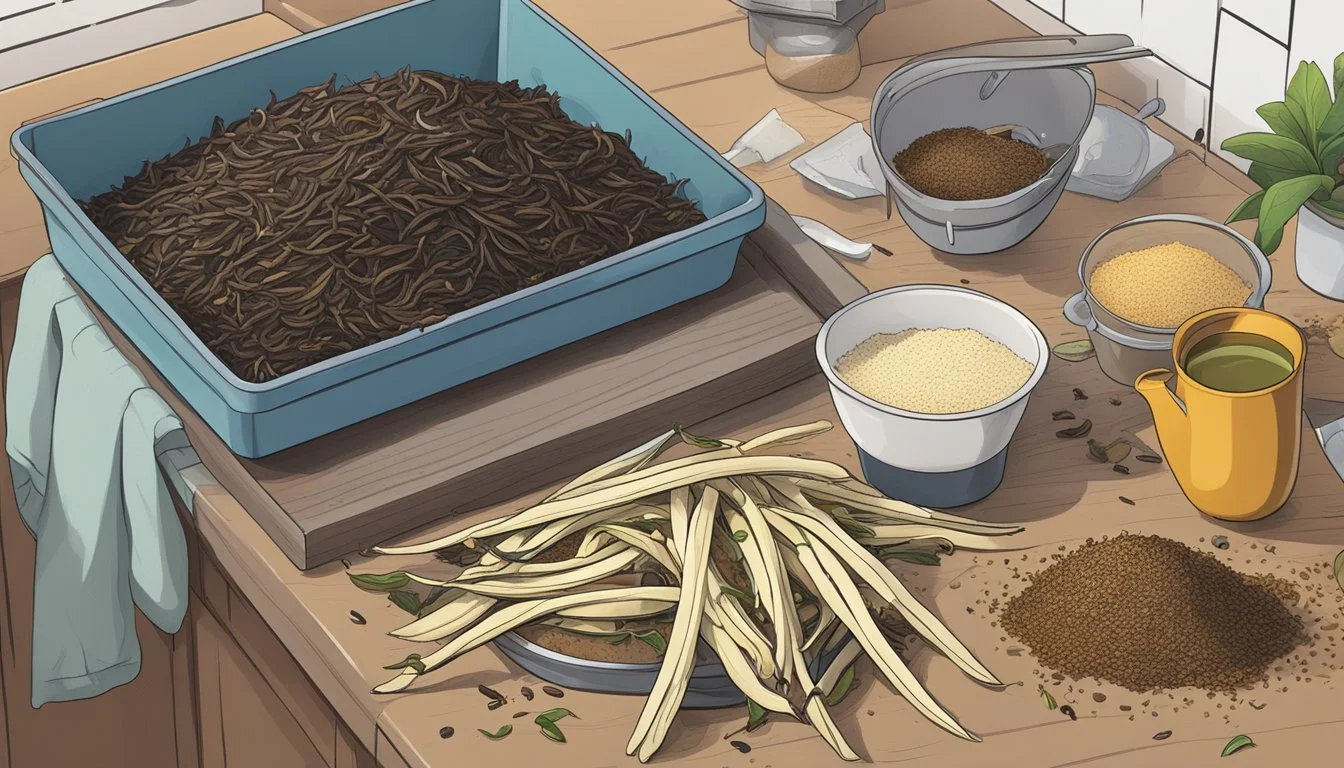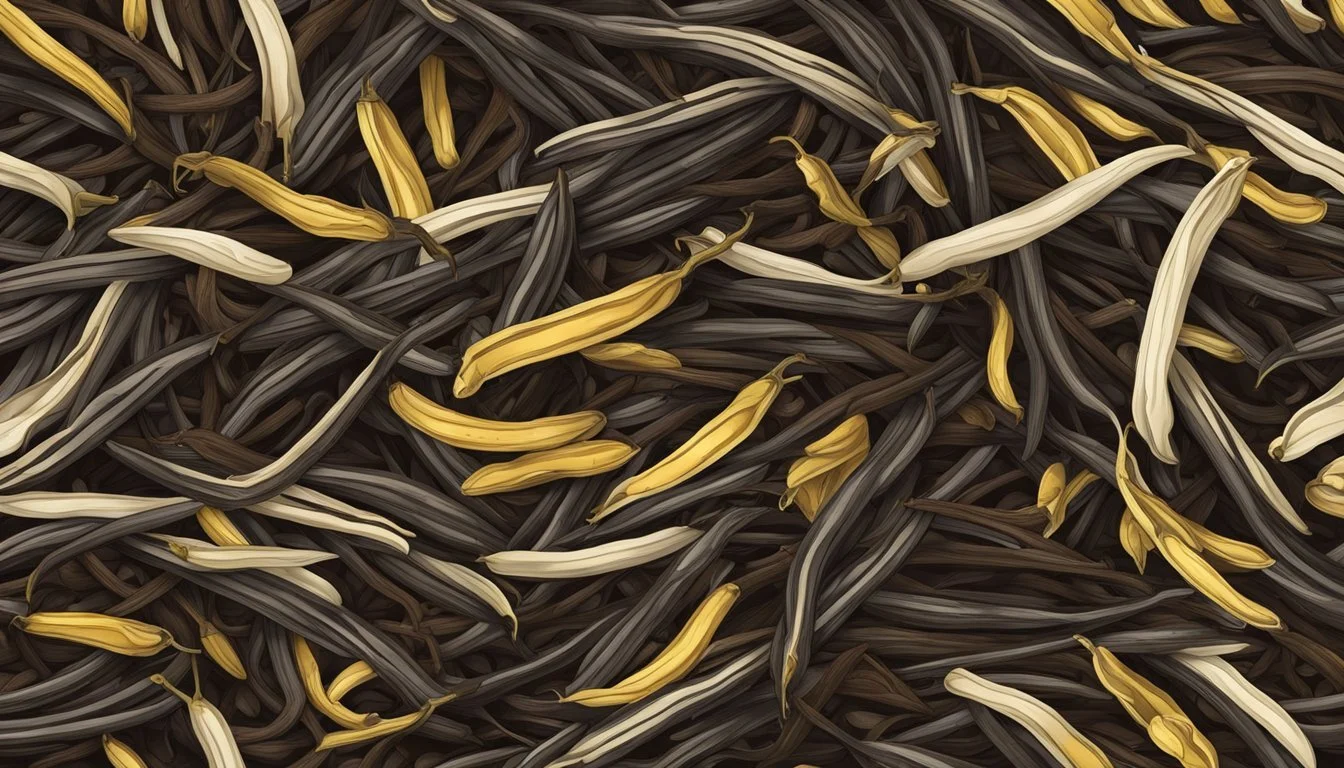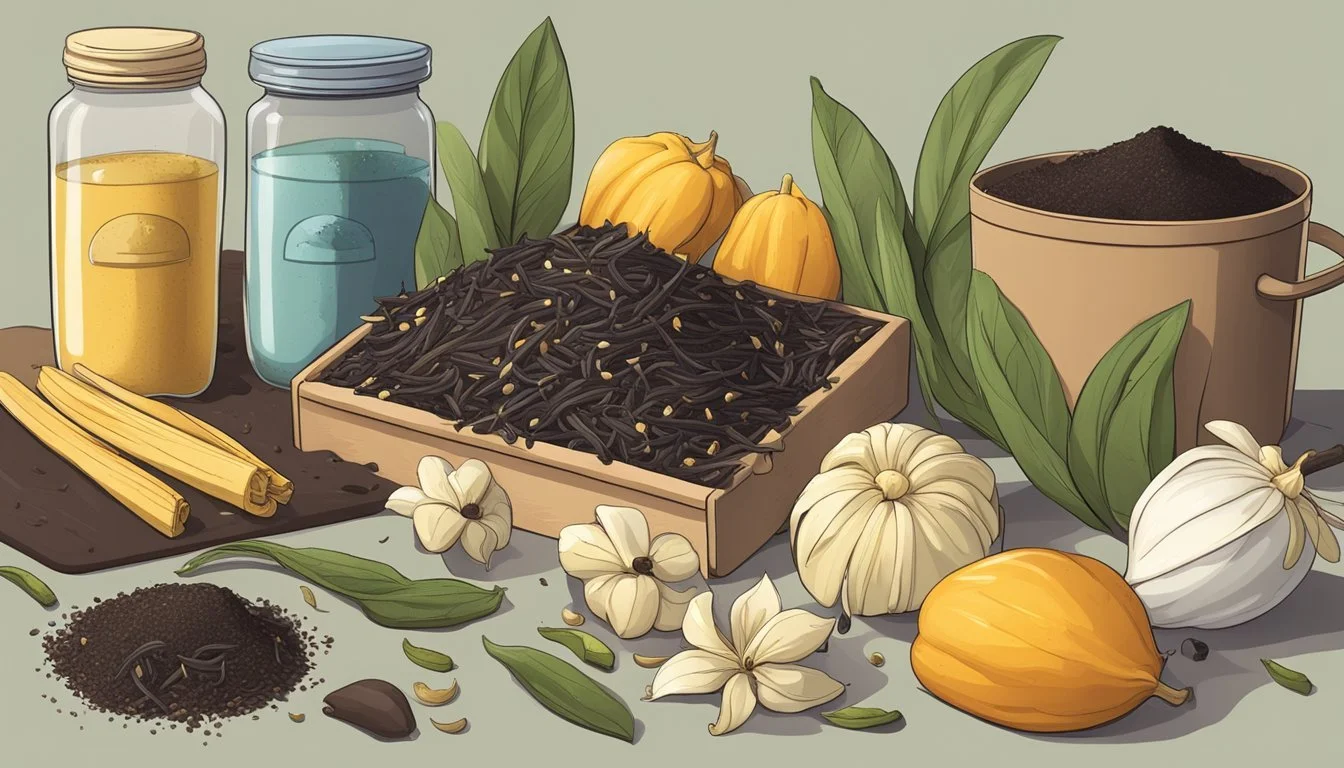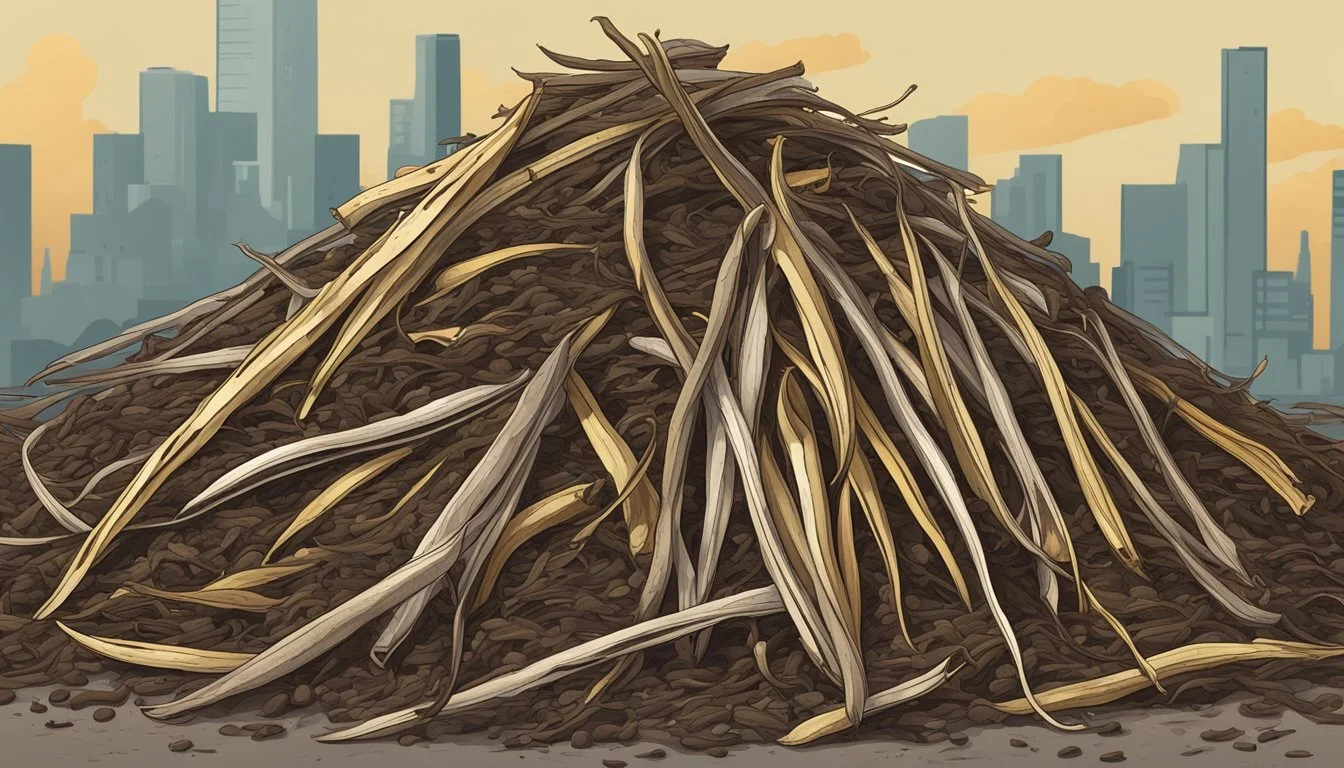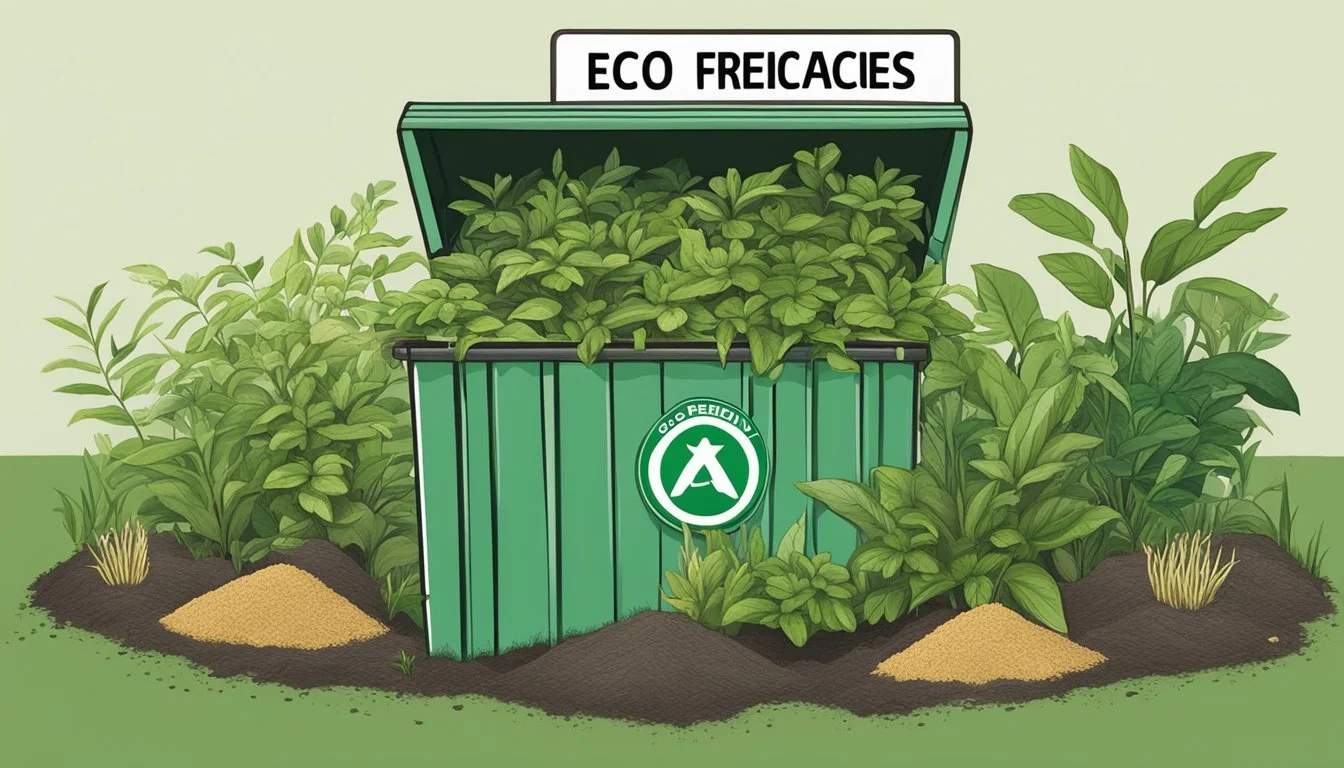Can You Compost Vanilla Beans?
Insights into Organic Waste Recycling
Composting is a natural process that recycles organic matter such as kitchen scraps and yard waste into a rich soil amendment known as compost. Among the various organic materials that can be composted, there is often a question of whether something as specific as vanilla beans can be included in the compost heap. As vanilla beans are a natural plant product, they break down like any other organic matter, which makes them suitable for composting.
In regard to the environment, introducing vanilla beans into a compost bin can contribute positively, as it diverts waste from landfills, reducing methane emissions, a potent greenhouse gas. Additionally, when vanilla beans are composted, they add nitrogen to the compost, an essential element beneficial for plant growth. It is important to remember that proper composting practices, such as maintaining the correct balance of green and brown materials and ensuring adequate aeration, are crucial for successful decomposition, including of materials like vanilla beans.
Benefits of Composting Vanilla Beans
Composting vanilla beans is an excellent way to recycle used pods after their aromatic elements have been extracted. When these organic materials are introduced into a compost heap, they contribute to the creation of nutrient-rich soil that supports plant growth.
Nutrient-Rich Soil: Vanilla beans add organic matter and essential nutrients to the compost, enriching the soil. These nutrients are critical for plant health and growth, making composted soil a beneficial medium for gardeners.
Non-toxic: As a natural product, decomposing vanilla beans will not release harmful chemicals into the environment. This is an added benefit for organic farming practices.
Soil Structure Improvement: Vanilla beans help to improve soil structure. Over time, composted organic matter breaks down, enhancing soil aeration and water retention capabilities.
Environmental Conservation: By composting vanilla beans, the need for chemical fertilizers is reduced, which benefits the environment by lessening the chemical load on ecosystems.
Table of Key Benefits:
Benefit Description Nutrient Addition Adds nitrogen and other minerals to the compost pile. Organic Matter Increase Enhances the organic content in the soil, promoting microorganism activity. Soil Health Improves soil structure, aeration, and moisture retention. Environmental Protection Reduces the use of chemical fertilizers and enriches the soil naturally.
Pre-Composting Considerations
Considering the unique nature of vanilla beans, certain factors must be assessed before adding them to compost to ensure efficient decomposition and maintenance of a healthy compost environment.
Assessing Bean Condition
The state of the vanilla beans is critical; cooked beans (how long do cooked beans last?) may compost more swiftly than raw beans due to their softened texture. Vanilla pods that are moldy or have been used for extraction could offer different nitrogen levels than fresh pods.
Moisture and Water Impact
An optimal water content in the compost is essential. Vanilla beans should not be overly wet, as excessive moisture can lead to unwanted odor. Balance the moisture by alternating layers of wet kitchen scraps with dry, carbon-rich 'browns' like leaves or cardboard.
Ideal moisture for compost: 40-60%
Water: Spray lightly if too dry
Balancing Compost Ingredients
A crucial aspect of composting is maintaining the right balance between nitrogen-rich 'greens' and carbon-rich 'browns'. Vanilla beans are considered green, thus balance them with sufficient browns to avoid nitrogen overload.
Nitrogen 'greens': kitchen scraps, grass clippings
Carbon 'browns': dry leaves, straw, paper
Temperature and Decomposition
Decomposition rates are significantly influenced by temperature. A compost pile should ideally maintain between 135-160°F to foster the breakdown of materials, including vanilla beans, while destroying pathogens.
Preventing Pests and Odor
Incorporating vanilla beans should be done with care to not attract pests or create odor. Ensure beans are well-covered by compost material to deter rodents and minimize smells.
Ideal Composting Conditions
Air circulation is pivotal for preventing an airtight environment which can suffocate the composting process. Vanilla beans need these conditions for effective decomposition:
Adequate airflow
Regular turning of compost
Direct sunlight exposure
A Necessary Environment for Vanilla Beans
For the vanilla plant's compounds to break down effectively, the compost must provide:
Consistent soil integration
Controlled humidity levels
Ambient temperature management
Each consideration plays a vital role in transforming vanilla beans into nutrient-rich compost.
Composting Process and Techniques
This section outlines how to integrate vanilla beans into a composting system and the importance of maintaining proper layering and aeration to produce rich, nutrient-dense soil.
Mixing Vanilla Beans Into Compost
Vanilla beans can be an excellent addition to compost as they contribute valuable organic matter. They should be cut into smaller pieces to speed up the decomposition process. In a compost heap or bin, vanilla beans should be regarded as green material, rich in nitrogen. It is crucial to balance them with brown material, such as dried leaves or brown cardboard, to prevent the compost from becoming too wet and dense. The ideal ratio for composting is approximately 1 part green to 3 parts brown material, which helps create an optimum environment for microbes to break down the organic components efficiently.
Sample Compost Layering:
Green Materials (Nitrogen-rich) Brown Materials (Carbon-rich) Vanilla Beans (chopped) Dried Leaves Fruit and Vegetable Scraps Shredded Cardboard Grass Clippings Straw or Hay Coffee Grounds Wood Shavings
Layering and Aeration
In terms of structure, good compost requires not just the right mix of green and brown matter, but also adequate oxygen for the aerobic decomposition process. Aeration is thus a key technique in the composting process. Turning the compost pile regularly or using a compost tumbler can provide the necessary airflow and helps to mix the contents evenly. Aeration ensures that the compost does not become compacted, which can create an airtight environment leading to an anaerobic process that produces unpleasant odors and slows down decomposition. When layering materials, one should aim for loose, alternating layers of green and brown materials to prevent large clumps from forming, which can restrict airflow.
In practice, a gardener might layer a portion of vanilla beans followed by a thicker layer of leaves or grass clippings, then another layer of beans, and so on, turning the pile periodically to introduce air. This method promotes the creation of a rich, crumbly compost, full of beneficial nutrients that can greatly enhance the quality of soil in garden beds.
Utilization of Composted Vanilla Beans
Composted vanilla beans offer a natural way to enrich soil with nutrients, providing a sustainable addition to gardening practices. They can serve various purposes in soil enhancement, potting mix formulations, and natural fertilizer preparations.
Enhancing Garden Soil
Composted vanilla beans add organic matter to garden soil, which improves its structure and water retention capabilities. The high carbon content in the beans helps balance the nitrogen-rich elements already present in garden compost, ensuring a nutrient-rich environment for a wide range of plants.
Potting Mix for Plants
Incorporating composted vanilla beans into potting mixtures can be especially beneficial for Vanilla planifolia, the species commonly used for vanilla bean cultivation. A neutral pH between 6.6 and 7.5 is ideal for these plants, and composted vanilla beans help maintain this balance, providing essential nutrients and promoting healthy growth.
Natural Fertilizer Production
Composted vanilla beans act as a natural fertilizer, slowly releasing essential nutrients such as nitrogen, phosphorus, and potassium into the soil. This gradual process aids in providing a consistent supply of nutrients to plants, enhancing the overall health of the environment without the need for synthetic fertilizers.
Vanilla Beans in Various Recipes
Vanilla beans are versatile ingredients, offering not only a rich flavor but also an aromatic depth to various recipes. They can be incorporated into baking recipes or used to create homemade vanilla extract and vanilla sugar, which enhance the flavor profile of sweet dishes.
Homemade Vanilla Extract
To make homemade vanilla extract, one starts by splitting vanilla pods lengthwise to expose the seeds inside. These beans are then submerged in alcohol—typically vodka due to its neutral flavor, although bourbon or rum can also be used for different nuances. The mixture should be stored in a cool, dark place for several months, allowing time for the vanilla flavor and aroma to infuse into the liquid, resulting in a potent vanilla extract.
Creating Vanilla Sugar
To transform ordinary sugar into vanilla-flavored sweetness, vanilla beans can be used post-extract production or fresh. After the seeds have been scraped out for other uses, the remaining pods can be added to a container of sugar. Over time, the aroma and flavor of the vanilla permeate the sugar, creating a subtle yet distinctive version known as vanilla sugar. This ingredient is perfect for a variety of baking recipes, adding a hint of vanilla to sweet treats.
Growing and Harvesting Vanilla
The cultivation and harvesting process of vanilla involves careful attention to growth conditions, pollination, and a meticulous curing process. This section elucidates the steps and conditions necessary to raise and harvest vanilla, highlighting the differences among the various types of vanilla.
Raising Vanilla Beans
Vanilla beans come from the vanilla orchid, Vanilla planifolia. Initially, growers should plant vanilla orchids near a support structure as they are climbing plants. They require a host tree or a similar structure for optimal growth. It's crucial to periodically check for pests and diseases, as they can severely affect the development of the plant.
Conditions for Growing Vanilla Orchids
The ideal environment for growing vanilla orchids comprises:
Light: Bright, indirect light or filtered light is optimal. Full shade can hinder flowering, while direct sunlight may cause burns.
Temperature: A warm climate with temperatures ranging from 60 to 95 degrees Fahrenheit.
Humidity: High humidity, at around 85%, is necessary for the plants to thrive.
Soil: Vanilla orchids prefer a well-draining soil mix and should be kept moist but not waterlogged.
Airflow: Good air circulation is essential to prevent fungal infections.
To simulate these conditions, many growers use a greenhouse, which allows control over temperature, humidity, and lighting.
Harvesting and Curing Vanilla Beans
Vanilla beans are ready for harvest 9 to 10 months after the flowers are pollinated. The pods should be at least six inches long. Once harvested, beans must undergo a curing process which includes blanching, sweating, drying, and conditioning for several months. This process allows beans to develop their characteristic fragrance and flavor.
Different Varieties of Vanilla
There are several varieties of vanilla, each with distinctive flavors and uses:
Madagascar Vanilla Bean: Known for its rich and creamy flavor, commonly used in ice creams and desserts.
Tahitian Vanilla Bean: Offers a fruity and floral taste, suitable for delicate pastries and fruit dishes.
Mexican Vanilla Bean: Has a smooth, spicy quality ideal for chocolate and spice-infused dishes.
Bourbon Vanilla: A generic term for beans from the Indian Ocean region, including Madagascar, with a traditional vanilla taste.
Each variety of vanilla can impart a unique touch to the culinary creations they are used in.
Composting Non-Vanilla Organic Matter
Composting is an essential process that facilitates the recycling of organic matter, including a broad array of food scraps and yard waste, back into the soil. Achieving the right balance of nitrogen and carbon is key to a successful compost.
Material Suitability
Carbon-rich materials, such as dried leaves, cardboard, and straw, are the foundational elements for composting. They are effectively balanced by nitrogen-rich materials, like grass clippings and kitchen scraps, which include eggshells, rice, grains and bread. Including sauces should be done with caution to avoid attracting pests. An ideal balance maintains a carbon to nitrogen ratio of about 30:1.
Decomposition of Different Beans
In the composting process, beans such as kidney beans and navy beans decompose efficiently. Fresh or green beans should be chopped to enhance their breakdown, while dried beans might take longer to decompose. It is important to bury these beans under layers of compost to prevent attracting animals due to their scent.
Handling Other Kitchen Scraps
Kitchen scraps are diverse; they can include eggshells, which add calcium to the compost, grains, bread, and rice. Eggshells should be crushed to speed up their decomposition. Rice and grains may attract pests if not buried properly within the compost pile. Maintaining an equilibrium between dry materials like cardboard and wet kitchen scraps ensures effective composting.
Vanilla-Inspired Eco-Friendly Practices
Incorporating eco-friendly practices in the kitchen can significantly reduce waste, particularly when cooking and baking with ingredients like vanilla, sugar, and cream. These practices contribute to a greener environment, and there are several specific ways to do this.
Reducing Kitchen Waste
One can reduce kitchen waste by composting organic materials like used vanilla beans. After extracting flavor for making homemade vanilla extract or homemade vanilla ice cream, the remaining beans still contain valuable nutrients and can be composted. Composting these beans is an excellent way to return nutrients to the soil and reduce food waste. Additionally, composting helps create a natural, nutrient-rich soil additive for gardening, further promoting an eco-friendly cycle.
Steps to Compost Vanilla Beans:
Rinse the spent vanilla beans to remove any sugar or alcohol residue from the extraction process.
Cut or break down the beans into smaller pieces to accelerate decomposition.
Add the vanilla pieces to your compost bin, mixing with other green waste like vegetable scraps and brown waste like dry leaves.
Ensure a proper balance of green to brown waste for optimal composting conditions.
Eco-Friendly Cooking and Baking
When creating recipes such as vanilla ice cream, it's crucial to consider the environmental impact of the ingredients used. Sustainable practices include sourcing natural ingredients like sugar and cream from local producers to reduce carbon footprint. Moreover, employing reusable containers and utensils further minimizes waste. These small changes in cooking and baking habits significantly contribute to environmental conservation.
Ingredients for Eco-Friendly Vanilla Ice Cream:
Cream: Obtain cream from local dairies to support sustainable farming.
Sugar: Use organic sugar to ensure environmentally friendly farming methods.
Vanilla: Opt for vanilla from sustainable sources, emphasizing fair trade practices.
By choosing to reuse equipment and selecting ingredients mindfully, one not only creates delicious food but also helps protect the environment, maintaining a balance between indulgent culinary endeavors and the well-being of our planet.

